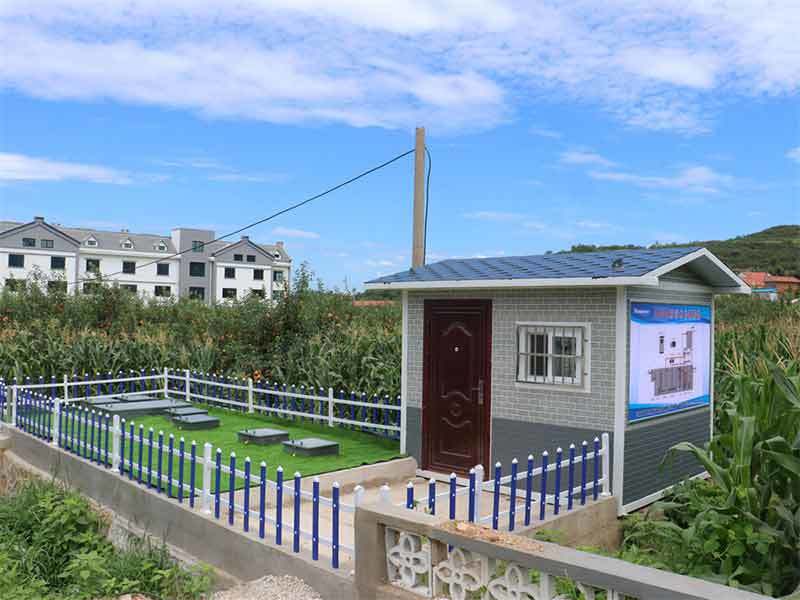- Overview
-
- Commodity name: Rural domestic sewage treatment equipment
Product Features
- Buried underground, the ground surface above the equipment can be used for greening or other purposes, eliminating the need for constructing houses, as well as providing heating and thermal insulation (suitable for school campuses where land use needs to be efficient and coordinated with the overall environment).
- The secondary biological contact oxidation treatment process adopts plug-flow biological contact oxidation, whose treatment effect is better than that of completely mixed biological contact oxidation tanks or two-stage series completely mixed biological contact oxidation tanks. Compared with activated sludge tanks, it has a smaller volume, stronger adaptability to water quality (adapting to the slight fluctuations of school sewage caused by daily and holiday changes), better shock load resistance, stable effluent quality, and no sludge bulking. The tank is equipped with new-type elastic three-dimensional fillers, which have a large specific surface area—facilitating microbial biofilm formation and detachment. Under the same organic load, it achieves a high organic matter removal rate and improves the solubility of oxygen from the air in water.
- The biochemical tank adopts the biological contact oxidation method. The volume load of its fillers is relatively low, and microorganisms are in the self-oxidation stage, resulting in minimal sludge production. Sludge only needs to be discharged once every three months (90 days or more) (via suction by a manure truck or dewatering into sludge cakes for outward transportation), reducing the daily maintenance workload for schools.
- For deodorization, this buried domestic sewage treatment equipment not only uses conventional high-altitude exhaust but also is equipped with soil deodorization measures—effectively avoiding odor pollution to the school campus and surrounding areas.
- The entire equipment treatment system is equipped with a fully automatic electrical control system and an equipment fault alarm system, ensuring safe and reliable operation. Generally, no full-time personnel are required for daily management; only timely maintenance and upkeep of the equipment are needed, which is in line with the actual operation and management conditions of schools.
Usage Method
- It can treat comprehensive domestic wastewater (such as sewage from school dormitories, teaching buildings, and gymnasiums) and similar organic sewage (including school canteen catering wastewater).
- It adopts a structure made of fiberglass-reinforced plastic (FRP) and stainless steel, which has excellent properties such as corrosion resistance and aging resistance, with a service life of more than 50 years—reducing the long-term replacement and renovation costs of school sewage treatment facilities.
- The entire set of equipment features simple construction and easy operation. All mechanical equipment is controlled automatically, and the entire device can be installed underground—minimizing the impact on the normal teaching and activity order of the school during installation and operation.
Application Scope
- Hotels, restaurants, sanatoriums, and hospitals (also applicable to school infirmaries with small-scale sewage discharge);
- Residential communities, villages, and market towns (highly matched with school campuses that have concentrated living and teaching areas);
- Railway stations, airports, seaports, docks, and ships;
- Factories, mines, military units, tourist spots, and scenic areas;
- Various industrial organic wastewater similar to domestic sewage (suitable for small-scale organic wastewater discharge from school laboratories or affiliated workshops, if any).
Keywords:
Messages
Contact: +86 18016210178 (Ms.Liu)
Add:No.56, Donghuan Road, Zhucheng City, Weifang City, Shandong Province
License







